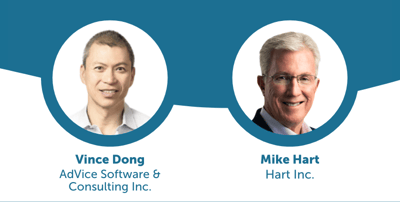Table Of Contents
My Takeaways from the Cannes Lions CMO Insider Breakfast
At the recent CMO Insider Breakfast hosted by Business Insider at Cannes Lions, some of the top voices in marketing from Salesforce to Mercedes-Benz to will.i.am, gathered to explore one big question: How will AI shape the future of marketing?
The answer, it turns out, isn't just about martech stacks or personalization at scale. It's about a fundamental shift in who (or what) we're working with. From AI agents embedded in CMO workflows to students entering the workforce with their own personal copilots, the message was clear: AI won't be an add-on-it'll be a collaborator.
Here's what stood out to me most for marketing agencies navigating this new terrain-and why adapting now means staying relevant tomorrow.
1. Your Future Coworkers, Job Candidates, and Even Client Contacts May Be Agents
In one of the most forward-looking moments of the panel, will.i.am made a stunning comment about college graduates in the future building their own agency in college and bringing them into the workforce.
Let that sink in. The next wave of marketing talent won't just be bringing resumes and portfolios to interviews; they'll be bringing their own copilots. Custom-trained agents that know their writing style, research preferences, ideation process, and even how they interact with teammates.
For agencies, this opens a new dimension of recruiting and team dynamics. You're not just hiring a junior strategist or content creator. You're hiring a hybrid: the person and the agent they've trained.
That raises new questions:
Should agencies evaluate the agent's capabilities as part of the hiring process?
Could agents themselves accelerate onboarding or performance tracking?
Might agencies even offer to enhance these agents as part of professional development?
It may sound futuristic, but with tools like GPTs and open-source agent frameworks already in use on college campuses, the future is closer than it seems. Smart agencies will start experimenting now.
Beyond this, as part of agency new business efforts and client account management, they may interact more with an agent than a human client contact.
2. In-House AI vs. Agency Advantage
Yes, many brands are investing in their own AI infrastructure. But even the best internal agents have a data ceiling: they're trained on one company's history, customers, and workflows.
Agencies have something different - a broader lens. They work across verticals, industries, and client archetypes. That gives agency-run AI access to a wider dataset and richer feedback loops. The result? Better-informed recommendations, faster iteration, and more creative problem-solving.
Agencies that train their own internal agents (or customize open models) on this diverse experience can deliver insights that even the most well-funded in-house teams can't replicate.
This advantage becomes even more critical as CMOs face increasing pressure to justify every marketing investment.
3. Don't Wait for the ROI Question---Answer It First
CMOs are under pressure to prove results, and AI isn't exempt. One theme echoed throughout the panel: when it comes to AI, curiosity is high, but budgets are tight.
If agencies aren't proactively quantifying the ROI of AI-powered work, CMOs will turn to their own agents to test, model, and benchmark performance - and potentially replace external partners altogether.
That doesn't mean every deliverable needs a revenue number next to it. But it does mean thinking more like a performance marketer: framing AI initiatives around time savings, conversion lift, or cost avoidance.
Show the value. Don't wait to be asked.
4. Marketing Needs More Science, Less Magic
A clear call emerged from the stage: it's time to bring more science into marketing.
Yes, creativity matters. But CMOs are increasingly asking for experimentation frameworks, test/control setups, and statistically significant insights. The traditional "big idea" isn't going away---but it now needs to be testable, tunable, and trackable.
Agencies that pair storytelling with structured experimentation will be able to serve clients on both the emotional and analytical fronts. And AI can help with both---accelerating ideation while also automating testing and reporting.
5. AI Workflows Every Agency Should Be Using Today
The future isn't about AI in theory. It's about using it now, in places where it quietly improves speed, quality, or cost. Some practical examples from the panel that agencies should be taking seriously:
Lead Follow-Up: AI can handle the first few touches after a download or inquiry, warming up prospects with personalized follow-up before the sales team steps in.
Content Production: AI streamlines ideation, outlines, drafting, and even formatting---cutting time without cutting creativity.
Hyper-Personalization: Deliver content that dynamically adjusts to user segments, behaviors, or intent signals using AI at scale.
Summarizing Insights: From customer interviews to social listening, AI can distill unstructured feedback into usable direction.
Report Summaries: AI can turn 30-slide decks or analytics dashboards into concise takeaways---perfect for execs (or busy clients).
If you're not already using some version of these workflows, start small, but start now.
Final Thought: AI Agents Don't Replace Talent. They Reveal It.
The biggest takeaway from Cannes? We're not just entering the age of AI tools; we're entering the age of AI companions.
Agencies that see this as a threat will fall behind. Agencies that see it as an opportunity will attract better talent, build smarter systems, and deliver faster value.
The future won't be human or agent. It will be human plus agent working together.
Picture this: a strategist reviewing campaign performance while their AI agent simultaneously analyzes competitor moves, pulls relevant case studies, and drafts three alternative approaches—all before the morning coffee gets cold. The strategist focuses on the big picture and creative direction, while the agent handles the research-heavy lifting.
Whether it's your next hire, your internal strategist, or your most demanding client... they might just show up with a co-pilot.
Be ready to meet them halfway.

 Reuben Shoub
Reuben Shoub

